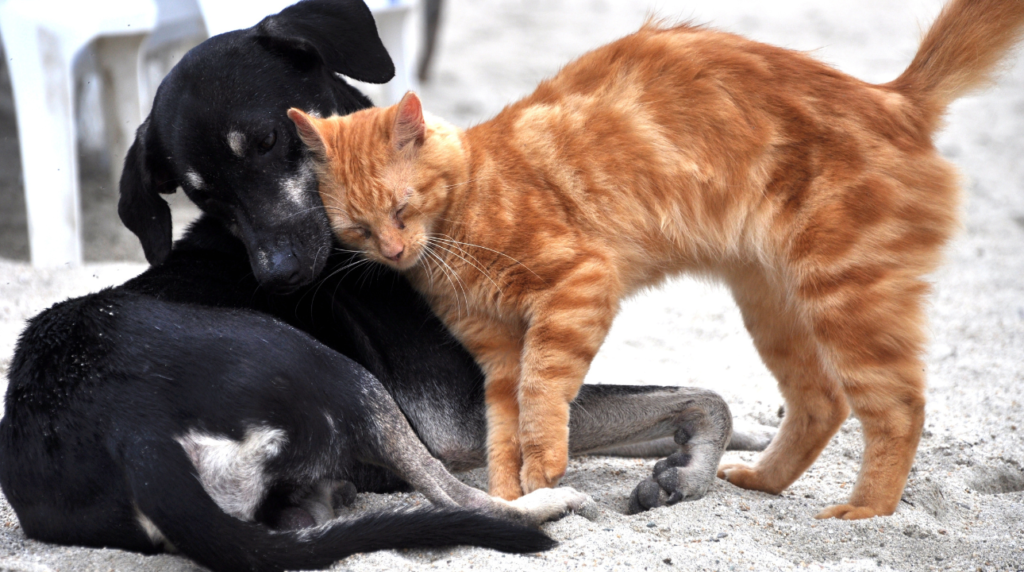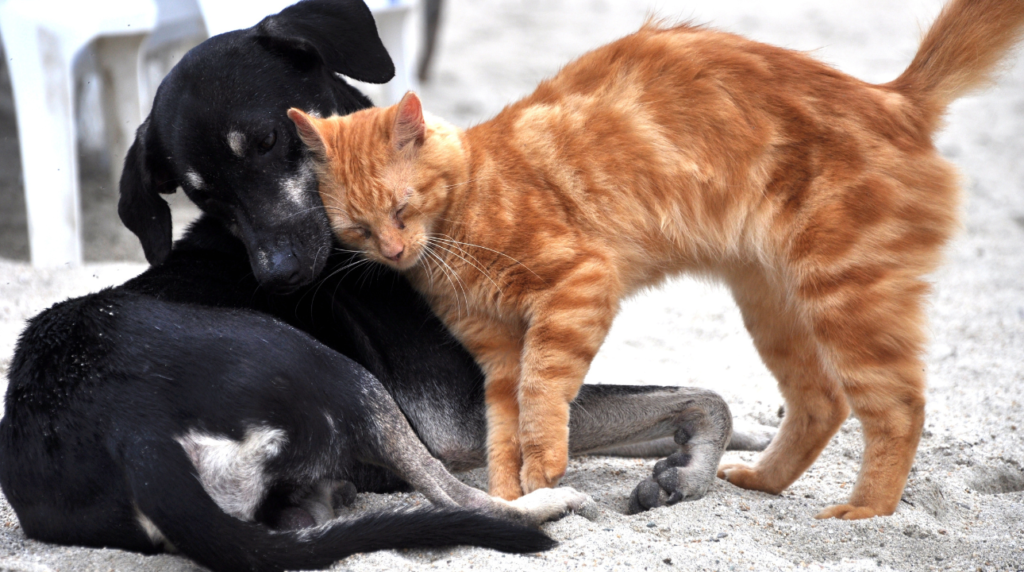How to Understand Feline Behavior?

Have you ever stopped to think about what your cat is really trying to say? While these felines are known for their independent nature, they have a rich range of behaviors that speak volumes about their emotions and needs. Understanding feline behavior is essential to ensuring a harmonious relationship with your pet.
From how they rub against you to the subtlest movements of their ears, every detail is a valuable clue about what your cat is feeling. If you want to deepen your understanding and enhance your relationship with your furry friend, you’re in the right place to learn about feline behavior!
In this article, we’ve gathered 10 essential tips to help you interpret feline behavior more effectively. By better understanding what motivates your cat, you will not only strengthen the bond between you but also ensure they feel safe and happy in your home.
If you are a cat lover looking to decipher the mystery surrounding these fascinating creatures, this article is for you. The journey to becoming a more in-tune and attentive pet owner begins here, and the rewards are priceless. Let’s explore the universe of feline behavior together!
Understanding Cat Body Language
Cat body language is one of the clearest ways to understand what they are feeling. Pay attention to the position of the tail: an upright tail usually indicates that the cat is happy and confident, while a low tail may signal fear or submission. Understanding feline behavior through body language is crucial.
Additionally, a tail that curves or sways can demonstrate excitement or irritation. This visual communication is crucial for pet owners who want to interpret their feline’s emotional state effectively.
Ears also provide valuable information. Ears pointing forward indicate curiosity or interest, while flattened ears mean discomfort or aggression. Being aware of feline behavior related to ear positioning can help avoid conflicts and create a more harmonious environment.
Furthermore, how a cat moves can reveal a lot about its emotional state. Cats that walk slowly and cautiously may be feeling insecure, while those that move quickly and confidently are likely comfortable in their surroundings. Paying attention to these details can significantly improve your understanding of feline behavior.
The Meaning of Meows and Vocalizations

Cats have a diverse vocal repertoire, and each meow can have a different meaning. Short, repeated meows may be a call for attention, while longer and more persistent meows can indicate hunger or discomfort. Understanding feline behavior through vocalizations can enhance communication between you and your cat.
Additionally, a high-pitched meow may signal pain or discontent. Pay attention to the tone and intensity of the vocalizations, as they can help differentiate between a request for affection and a warning sign.
Cats also use specific vocalizations to communicate with their owners. For example, when a cat “talks” to you more insistently, it may be expressing a desire to interact or simply to feel close to you. By recognizing these vocalizations, you can respond more effectively to your cat’s needs, strengthening the bond between you.
Moreover, some cats vocalize more than others, and the amount of vocalization can vary by breed. For example, Siamese cats are known for being particularly talkative, while breeds like the Persian tend to be quieter. Knowing the vocalization pattern of your specific cat can help detect changes that may indicate stress or health issues related to feline behavior.
Identifying Hunting Behavior
Cats are natural hunters, and many of their daily behaviors are influenced by this instinct. If you observe your cat “chasing” invisible objects, it may be a manifestation of their hunting instinct. Recognizing this aspect of feline behavior can help you engage your cat effectively.
Playing with fishing poles or toys that mimic prey can help satisfy this innate need, providing not only physical exercise but also mental stimulation. This behavior can also be seen during playtime. When a cat brings you a toy, they might be trying to show off their “catch” or simply inviting you to interact.
Providing toys that encourage hunting is an excellent way to channel this energy, helping to prevent your cat from feeling bored or frustrated. Creating an environment that simulates hunting opportunities, such as hiding treats or toys around the house, can be extremely beneficial. This not only provides exercise but also allows your cat to express their natural behavior in a safe and healthy way, contributing to their overall well-being.
The Importance of Space and Territory
Cats are territorial animals and often need spaces they consider safe. When a cat marks its territory, they may rub their head on furniture or scratch surfaces. Understanding feline behavior in relation to territory is essential for providing a harmonious home environment.
This is a way to leave their scent and assert possession over the space. Recognizing this need is essential for providing a harmonious and comfortable environment for your feline friend. By providing suitable areas for your cat to explore and rest, you can help reduce anxiety and stress.
Cardboard boxes, climbing shelves, and even scratching posts are crucial for your cat’s mental health and well-being. Creating an environment that includes different height levels can satisfy their instinctive need to observe territory from above.
Additionally, understanding that cats may feel threatened by sudden changes in their environment is crucial. New furniture introductions, changes in room layout, or even the presence of new animals can cause stress. Giving your cat time to adjust and explore changes at their own pace is essential to ensure their comfort and well-being.
Understanding Scratching Behavior

Scratching is a natural necessity for cats, not only to sharpen their claws but also to mark territory and relieve stress. Understanding feline behavior in relation to scratching can help you manage this behavior effectively.
If your cat is scratching furniture, it’s crucial to provide appropriate alternatives, such as cardboard or carpet scratching posts. This action helps keep your cat’s claws in good shape and prevents them from damaging household items.
Pay attention to where your cat prefers to scratch; if they have a specific corner, it might be a good idea to place a scratching post in that area. By redirecting this behavior to suitable objects, you protect your furniture and give your cat a healthy outlet for their needs.
Moreover, many cats like to scratch right after waking up, so having a scratching post near where they sleep can be beneficial. It’s important to remember that patience is key. If your cat continues to scratch furniture, even with scratching posts available, consider using sprays or products that make the furniture less appealing. Over time, and by providing appropriate alternatives, you’ll see a reduction in unwanted behavior.
How Stress Affects Feline Behavior
Stress can manifest in various ways in cats’ behavior. Changes in the environment, such as the introduction of new pets or alterations in family routines, can cause anxiety. Understanding feline behavior in relation to stress is vital for their well-being.
Stressed cats may hide, become more aggressive, or even stop eating. It’s important to observe these changes and act quickly to understand the source of the stress. If you notice your cat acting differently, it may be helpful to identify the source of stress and, if possible, mitigate it.
Creating a safe and quiet space where your cat can retreat is essential during stressful periods. This space should be accessible, comfortable, and free from disturbances, allowing them to feel secure.
Additionally, environmental enrichment techniques, such as games and interactive toys, can help alleviate anxiety. Spending time interacting and playing with your cat is crucial, as it not only helps relieve stress but also strengthens the bond between you.
Recognizing Signs of Comfort and Discomfort
Cats have subtle ways of showing when they are comfortable or uncomfortable. A relaxed cat often lies with its paws stretched out and belly exposed, indicating that they feel safe. Understanding feline behavior in this context can help you create a more comfortable environment for your feline friend.
On the other hand, a cat that crouches or hides its head may be feeling threatened. Learning to recognize these signs will help you understand feline behavior better and respond accordingly.
Additionally, pay attention to your cat’s behavior during social interactions. If they approach you with a slow, calm movement, it usually means they are at ease. This is an important aspect of feline behavior to consider.
Conversely, if they back away quickly or avoid eye contact, they might be feeling threatened or uncomfortable. This awareness of feline behavior will help you respond appropriately.
What Behaviors Indicate Abnormality in Cats?

Identifying abnormal behaviors in cats is essential for ensuring their well-being and health. Here are some behaviors that are not considered normal:
Excessive Aggression: Cats that become aggressive without provocation or attack their owners or other animals may be stressed, in pain, or exhibiting behavioral problems related to feline behavior.
Constant Hiding: While it’s normal for cats to seek hiding spots, hiding for long periods may be a sign of stress, fear, or health issues.
Sudden Changes in Appetite: Drastic changes in eating habits, such as loss of appetite or overeating, may indicate health problems, including metabolic diseases or dental issues.
Excessive Vocalizations: Cats that start vocalizing excessively, especially if this wasn’t typical for them, may be expressing discomfort, pain, or stress linked to feline behavior.
Compromised Self-Grooming: Lack of grooming may indicate health problems, such as pain or obesity, which makes it difficult for them to reach areas of their body they would normally clean.
Inappropriate Elimination: Urinating or defecating outside the litter box can be a sign of health issues, stress, or dissatisfaction with the environment.
Obsessive or Repetitive Behaviors: This includes actions like compulsively licking, chasing shadows, or invisible objects, which may indicate stress or anxiety affecting feline behavior.
Apathy or Lethargy: Cats that were once active and playful but have become apathetic or inactive may be facing health issues.
Increased Marking Behavior: Cats that begin to excessively mark territory, especially indoors, may be feeling threatened or stressed.
Changes in Social Behavior: If a cat that was once sociable becomes isolated or a normally reserved cat becomes overly clingy, it may indicate emotional or health problems related to feline behavior.
If you notice any of these behaviors in your cat, it’s important to consult a veterinarian to rule out health issues and discuss possible behavioral interventions.
The Importance of Play for Cats
Play is essential for the physical and mental health of cats. Playing with your cat not only keeps them active but also strengthens the bond between you. Understanding feline behavior during playtime is vital for enhancing your relationship.
Provide a variety of toys that encourage different types of play, such as hunting, chasing, and exploration. Regular activity is vital to prevent boredom and obesity.
Cats love interaction, and dedicating time daily to play with them can improve their well-being. This engagement reflects a key aspect of feline behavior that fosters happiness.
Try different types of toys to see which ones they prefer, and whenever possible, play with them using movements that mimic hunting behavior. This not only provides exercise but also stimulates your feline’s mind.
Another interesting option is to create interactive play sessions using everyday objects like boxes or paper bags. These common items can be transformed into fascinating toys, allowing your cat to explore and play creatively and fun, enriching their feline behavior.
Social interaction

Cats may be more independent than dogs, but they are still social animals that appreciate interaction with their owners. Each cat has its own personality, and understanding how your cat likes to interact can enrich your relationship by enhancing feline behavior.
Some breeds are more sociable, while others may be more reserved. Therefore, respecting your cat’s space is crucial in understanding feline behavior.
When it comes to interacting with a cat, it’s important to observe their comfort signals. Cats that approach you and rub against you are generally friendly and seeking companionship, indicating positive feline behavior.
On the other hand, if your cat backs away or hides, they may be feeling overwhelmed. Allow your cat to initiate interactions to ensure they feel secure.
Moreover, social interactions should include playtime and moments of affection, always respecting your cat’s limits. Providing a variety of social experiences and allowing your cat to choose when and how to interact will help strengthen the trust and bond between you.
Maintaining Cats’ Physical and Mental Health
The physical and mental health of cats is vital for their overall well-being. Regular veterinary visits for check-ups and vaccinations are essential to keep your cat healthy. Understanding feline behavior also includes monitoring their health.
Additionally, monitoring changes in behavior, appetite, or sleeping patterns can help identify health issues before they become serious.
Diet is another crucial aspect of your cat’s health. Offering a balanced diet appropriate for their age and activity level will help prevent obesity and other diseases related to feline behavior.
Consult your veterinarian for recommendations on the best diet for your cat, and avoid making abrupt changes in their food.
Mental stimulation is also vital. Cats that have access to interactive toys and opportunities for exploration are less likely to develop behavioral problems. Enriching your cat’s environment with scratching posts, shelves, and a variety of toys ensures that they have a stimulating and healthy space to live.
Conclusion
Understanding feline behavior is fundamental to providing a healthy and happy life for your cat. By observing their body language, vocalizations, and social interactions, you can build a stronger and more respectful relationship with your feline friend.
Recognizing your cat’s instinctual needs and providing an enriched and safe environment not only promotes their physical well-being but also strengthens the emotional bond between you.
Additionally, ongoing care and attention to signs of stress or discomfort are essential for ensuring your cat’s long-term health. By implementing the tips discussed in this article, you will be better equipped to interpret what your cat is feeling and how they behave, allowing you to effectively meet their needs.
After all, the relationship you build with your feline friend is unique and should be nurtured with love, patience, and understanding.
